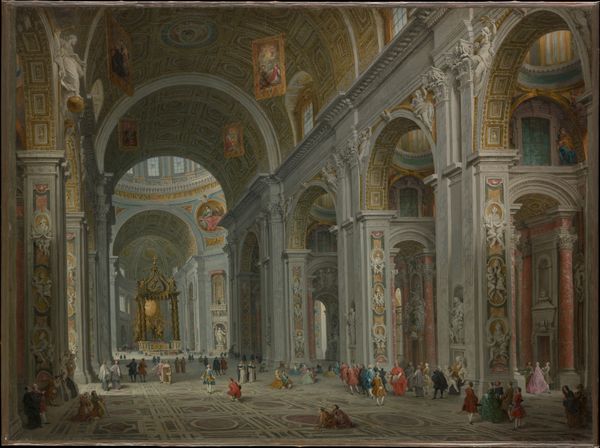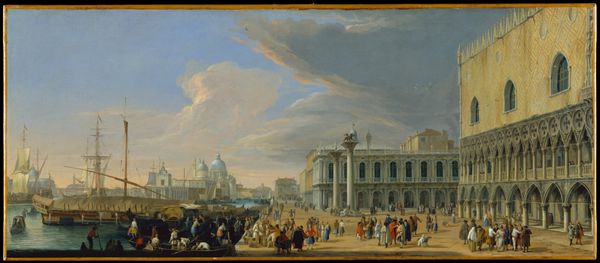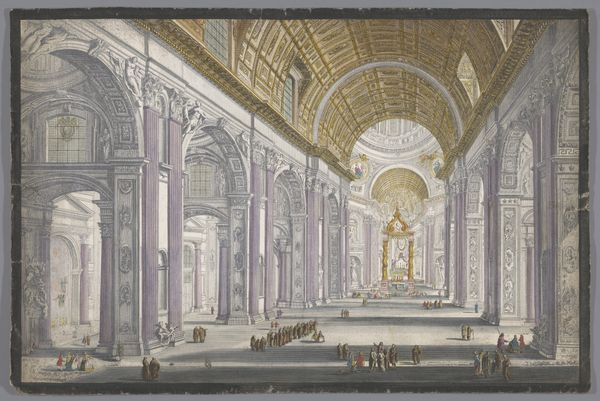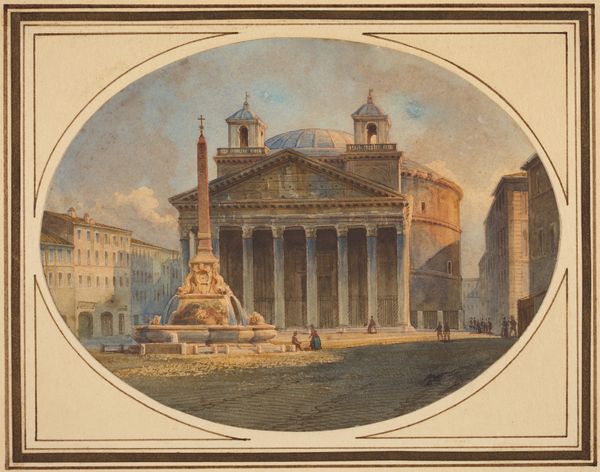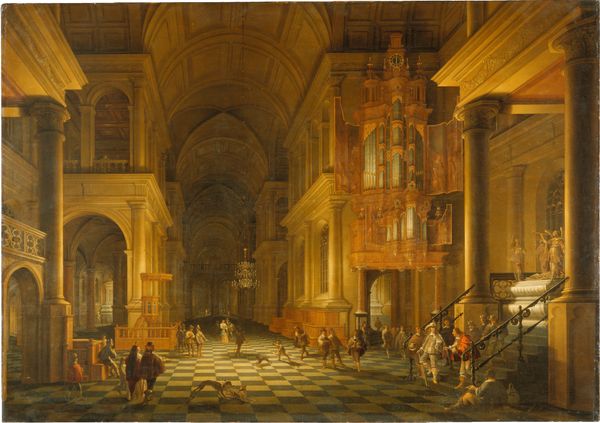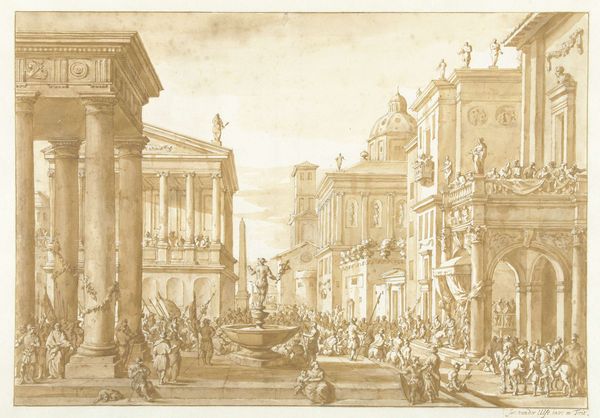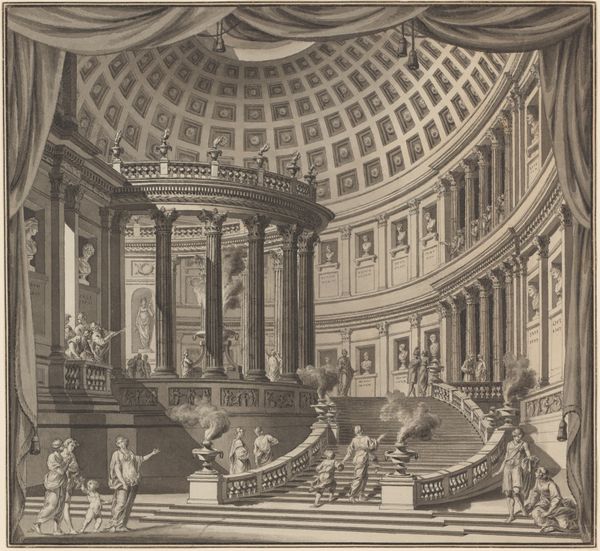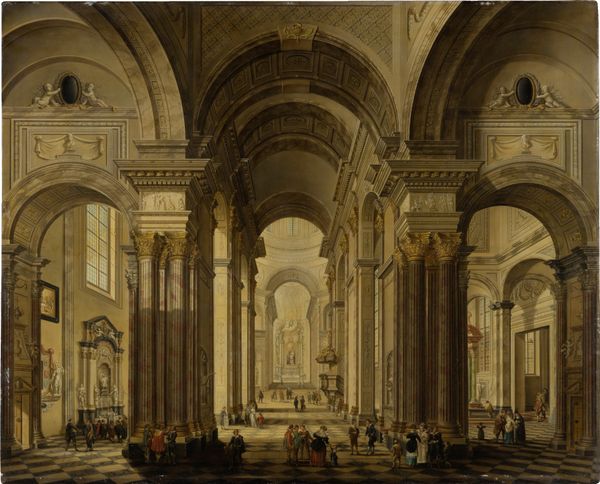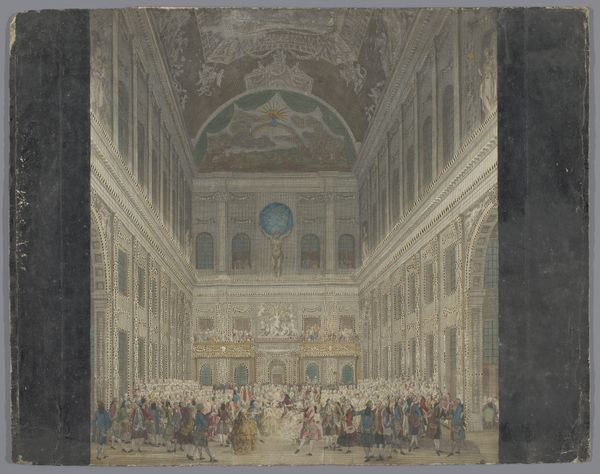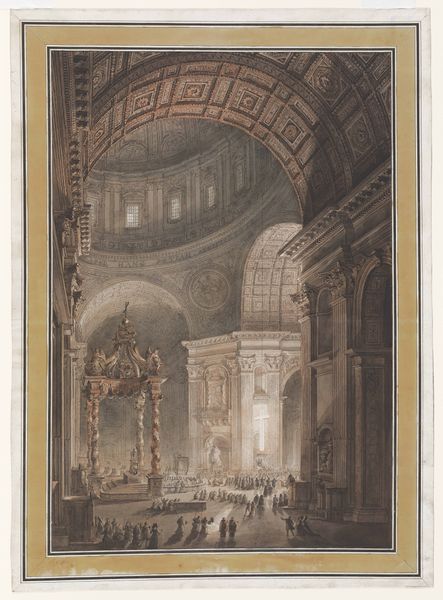
drawing, oil-paint, paper, watercolor, architecture
#
drawing
#
narrative-art
#
oil-paint
#
classical-realism
#
paper
#
oil painting
#
watercolor
#
15_18th-century
#
watercolour illustration
#
history-painting
#
academic-art
#
watercolor
#
architecture
Copyright: Public Domain
Curator: Let's discuss this intriguing piece, "Szene aus Mozarts Titus-Oper," found here at the Städel Museum. It's an absorbing watercolor and oil on paper. Editor: My immediate reaction is a sense of staged power—an almost theatrical quality enhanced by the architectural rendering and carefully positioned figures. It feels less like documentation and more like the construction of an idealised past. Curator: Exactly! The composition is structured with rigid orthogonals and clear delineation. Look at how the receding arches draw the eye deeper into the pictorial space, guiding our focus toward the imperial court. It’s a masterful command of perspective, don’t you think? Editor: Certainly masterful, but what narratives are being valorised? The architectural grandeur seems designed to overwhelm, visually reinforcing an almost oppressive social hierarchy. Considering opera's history as entertainment for the elite, I wonder who this representation is really *for*. Curator: We can analyze it in terms of stage design—the spatial relationships between the foreground crowd, the actors on the steps, and the almost god-like emperor figure presiding from above create a pyramidal arrangement. This hierarchical ordering contributes to the work's stability and sense of classicism. Editor: Yet, that sense of order masks potential critiques. The painting presents a meticulously crafted world of authority, which makes me consider opera's revolutionary potential – often subverting, or at least questioning, these structures through dramatic and musical expression. What elements resist this apparently seamless performance of power? Are the individuals rendered without particularization to signify universal submission or oppression? Curator: You raise compelling questions. Nevertheless, formally, observe how the cool blues in the far-off vista are strategically juxtaposed with the ochres and browns closer in the foreground, adding considerable depth and a harmonious tonal balance. Editor: I concede its visual harmonies are compelling. But beyond technique, it highlights opera's enduring fascination with power, spectacle, and their entanglement, continuing relevant dialogues within our current social theater. Curator: Perhaps, after our exchange, visitors might view the art and architecture more openly, seeking deeper layers underneath all those surfaces. Editor: And possibly prompting visitors to critically reflect on contemporary performances of power and their visual representation in this era, through visual, or theatrical displays.
Comments
No comments
Be the first to comment and join the conversation on the ultimate creative platform.

